Building Foundations for a Happy, Well-Adjusted Dog
At the heart of a dog’s welfare is a safe, secure, and predictable home environment. Dogs are creatures of habit and feel most comfortable when their world is familiar and reliable. Simple routines such as regular feeding schedules, consistent walk times, and structured rest periods can make a significant difference in how secure and calm your dog feels.
Predictability reduces anxiety by helping dogs anticipate what comes next, allowing them to navigate their environment with confidence. It’s the same for us, unprefictability can be very stressful.
Comfortable living conditions also matter deeply to dogs. Dogs benefit from having a quiet, restful place to sleep and relax, needing to sleep for 18 hours (*depending on age) away from household noise and foot traffic. Their environment should also offer freedom from physical discomfort such as extreme temperatures, loud or chaotic noises, and crowded or overstimulating conditions.
In addition to safety and comfort, dogs need access to species-appropriate resources that allow them to perform natural behaviours. Chewing, sniffing, digging, and playing are not just recreational they are biologically essential for dogs, this is what we call species-appropriate. Providing items like chew toys, interactive feeders, and safe outdoor space allows dogs to engage with their environment in enriching ways. Food puzzles, scent games, and varied walking routes add both mental stimulation and pleasure, preventing boredom and frustration.
Physical exercise is another fundamental need. Each dog’s exercise requirements depend on their breed, age, and overall health, but all dogs need daily movement (min of 20mins). Activities like walking, running, swimming, and fetch offer physical outlets for energy and help maintain a healthy weight and cardiovascular system. Exercise is also a key component in reducing behavioural problems such as excessive barking, destructiveness, and restlessness.
Mental stimulation is equally important, just as humans can become irritable and unmotivated when understimulated, so can dogs. Training exercises, problem-solving games, and scent trails can keep your dog’s mind sharp and engaged. These activities also help build confidence and reinforce your relationship, offering structured ways to communicate and succeed together.
Socialisation, done correctly and sensitively, is another pillar of behavioural health. Dogs must learn to feel safe around other animals, people, and in diverse environments. Exposing them to these situations early in life and continuing to do so throughout adulthood in positive, controlled ways helps prevent anxiety and reactivity. Gentle introductions, group walks, and dog-friendly events provide valuable experiences. But just as importantly, dogs must always be given the option to disengage or retreat. Forcing social interaction can damage trust and increase fear.
Emotionally, dogs are deeply bonded to their caregivers. They seek connection, approval, and security. Emotional needs are often overlooked but are as essential as food or shelter. A calm and compassionate human helps dogs feel safe and understood. Using positive reinforcement to reward desired behaviours strengthens your dog’s motivation to repeat them, while avoiding punishment helps preserve the emotional bond and prevents fear-based responses. Small, everyday interactions, like gentle grooming, a quiet cuddle, or simply sitting together, depending what your dog enjoys will build emotional resilience over time.
Behaviour and health are closely linked, and any sudden or persistent changes in behaviour may indicate underlying medical issues. Regular veterinary care, including welfare exams, dental health, and parasite control, ensures that physical pain or illness isn’t affecting behaviour. Routine grooming such as brushing, nail trimming, and ear cleaning not only promotes hygiene but also conditions your dog to tolerate handling, reducing stress during vet visits or grooming sessions.
Desensitisation to being touched, handled, or restrained can prevent fear or aggression in clinical settings.
Meeting your dog’s basic behavioural needs is not just about preventing problems it lays the foundation for long-term welfare. A dog that is physically comfortable, mentally active, emotionally supported, and socially capable is more likely to thrive and less likely to develop behaviour issues such as anxiety, aggression, or compulsive behaviours. Such a dog is better equipped to adapt to new situations and form strong, positive relationships with people and other animals.
As a Clinical Animal Behaviourist (CAB), my first approach is always holistic. When I assess a dog with behavioural concerns, I begin by asking whether their fundamental needs are being met. I look at their environment, daily routines, health status, and emotional welfare. Addressing these root areas provides the strongest possible foundation from which behavioural recovery and learning can take place. No behavioural intervention will be successful if the dog is unwell, stressed, or lacking a supportive routine. This is something you can do to, so do keep reading as this blog will give you those tools.
Your role in your dog’s life is powerful. Every choice you make how you feed them, play with them, respond to their cues, and support their emotional needs shapes their behaviour and welfare. By building a world that prioritises safety, predictability, stimulation, and compassion, you offer your dog not just a healthy lifestyle but a fulfilling and emotionally rich life.
How Early Experiences Shape Your Dog’s Future Behaviour
Early life experiences have a profound impact on your dog’s behavioural development. The period between 3 and 14 weeks of age is known as the critical socialisation window. During this time, puppies are especially receptive to learning about the world around them. Positive exposure to a variety of people, animals, environments, sounds, and handling experiences lays the groundwork for confidence and adaptability later in life.
However, it’s not just about exposure how those experiences are managed matters even more. A puppy who is overwhelmed, frightened, or forced into new situations too quickly can develop fear or avoidance behaviours. By contrast, when socialisation is done at the puppy’s pace, using encouragement and rewards, it builds resilience and curiosity.
Negative or traumatic experiences during early development such as isolation, inconsistent handling, or harsh punishment can leave lasting effects. These dogs may struggle with trust, show anxiety in unfamiliar settings, or develop reactive behaviours. In some cases, these issues only emerge later in life when the dog encounters new stressors or enters adolescence. The benefits of early training during this time are also significant. Teaching basic cues, handling exercises, and building a trusting relationship forms the framework for future learning. Puppies that are given consistent guidance, gentle leadership, and positive reinforcement grow into adult dogs that are easier to handle, less reactive, and more comfortable in a variety of environments.
Even beyond the early window, social and environmental learning continues throughout adolescence and into adulthood. Ongoing positive experiences and support are essential to maintain and reinforce good behavioural health. This means regularly revisiting familiar skills, introducing new experiences gradually, and ensuring that your dog continues to feel safe and supported.
Understanding your dog’s early life whether you’ve had them since puppyhood or adopted them later can help explain some of their current behaviours. For dogs who missed out on positive early socialisation, it’s never too late to start. With patience, planning, and support, behavioural change is possible at any age.
How Fear and Stress Affect Behaviour
Fear and stress are powerful emotional states that can significantly influence your dog’s behaviour. They often underlie common behavioural problems, including aggression, destructiveness, barking, and withdrawal. While occasional stress is a normal part of life, chronic or overwhelming stress can disrupt a dog’s ability to learn, cope, and feel safe in their environment.
Dogs experience stress for many reasons: loud noises, unfamiliar people or places, changes in routine, separation from their guardians, or even internal discomfort from pain or illness. Some dogs are more resilient than others, but all dogs have limits and those limits can vary depending on their health, history, and current support systems.
Fear-based behaviours often develop when a dog feels they have no control over their situation. For example, a dog that growls when someone reaches toward them may be trying to communicate discomfort or fear. If this warning is ignored or punished, the dog may escalate to more intense behaviours like snapping or biting, especially if their attempts to escape or avoid the situation are blocked.
Stress is not always obvious. It can present subtly: excessive yawning, lip licking, pacing, avoidance, freezing, or a change in appetite. These are all signs that your dog may be struggling emotionally. It’s important to recognise these cues and respond with empathy and support, not punishment.
Creating a low-stress environment involves predictable routines, gentle handling, and allowing dogs autonomy where appropriate such as giving them the choice to move away or take breaks. Reducing exposure to known stressors, providing calming enrichment (like sniff walks, licking mats, or puzzle feeders), and using positive reinforcement to build coping skills can help your dog feel more secure.
One of the most effective ways to support a fearful or stressed dog is through gradual desensitisation and counter-conditioning. This process involves exposing your dog to the stressor at a very low level and pairing it with something positive, like a treat or game. Over time, your dog learns that the once-scary thing is now safe or even enjoyable. Helping your dog manage stress and fear doesn’t mean eliminating all challenges it means equipping them with the tools and support they need to handle those challenges with confidence. When we view behaviour through the lens of emotional health, we open the door to more compassionate, effective solutions that honour the needs and experiences of our dogs.
The Power of Play and Enrichment
Play and enrichment are more than just entertainment for your dog they are essential tools for promoting emotional balance, preventing problem behaviours, and supporting overall mental and physical welfare.
Dogs are intelligent, social animals that need stimulation to stay happy and healthy. Without regular mental and physical engagement, they may develop behaviours like excessive barking, chewing, digging, or even anxiety and depression. Enrichment provides an outlet for natural behaviours and satisfies their need to explore, solve problems, and interact with their environment.
There are many types of enrichment that can benefit your dog. Physical play, such as tug-of-war, fetch, or safe roughhousing, helps burn energy and encourages healthy social interaction. Mental enrichment like puzzle toys, treat-dispensing games, or training new tricks keeps your dog’s brain active and engaged. Sensory activities, such as scent trails or foraging games, allow dogs to use their incredible sense of smell, which is deeply satisfying and calming.
Enrichment also helps dogs learn to cope with new situations and build confidence. For example, introducing novel textures, toys, or mild challenges during play can increase a dog’s curiosity and resilience. Regular, varied enrichment teaches your dog that their environment is safe and rewarding, which reduces anxiety and supports a stable emotional state. Incorporating play into your daily routine strengthens the human-animal bond. When play is used thoughtfully and interactively, it becomes a shared language a way for you and your dog to connect, build trust, and release stress together. The joy and engagement from positive play experiences promote a happier, more balanced dog.
Overall, play and enrichment should be viewed as essential components of your dog’s care just like nutrition, exercise, and veterinary visits. By prioritising enrichment, you give your dog opportunities to express themselves, stay emotionally regulated, and live a more fulfilled life.
Read about Enrichment here: Enrichment Beyond the Bowl
Understanding Communication and Canine Body Language
Effective communication is at the heart of a strong human–dog relationship. Dogs are constantly communicating with us, but they do so in ways that are often subtle and easy to misinterpret. By learning to read your dog’s body language and understand their cues, you can respond more appropriately and avoid situations that may lead to fear, frustration, or even aggression.
Canine communication is largely visual and postural. Key signals include the position of the ears and tail, facial expressions, body posture, and movement. For example, a dog that turns its head away, licks its lips, or yawns when not tired may be trying to signal discomfort or stress. Similarly, a stiff body, intense stare, and slow tail wag often indicate a dog is feeling conflicted or threatened not friendly, as many people mistakenly assume.
Recognising early signs of discomfort or arousal allows you to intervene before the situation escalates. Instead of correcting or ignoring these signals, consider what your dog is trying to tell you. Are they overwhelmed by the environment? Are they unsure about a person or another animal? Giving your dog space and reassurance can prevent conflict and build trust. Equally important is understanding how your own body language and tone affect your dog. Dogs are highly sensitive to human emotional states. Sudden movements, loud voices, or inconsistent cues can confuse or frighten them. Calm, clear communication, paired with consistent cues and body signals, helps dogs feel safe and understood.
Teaching alternative behaviours and using rewards to reinforce them also helps improve communication. For instance, teaching a dog to look at you instead of barking at a passerby allows them to express themselves in a more manageable way. This mutual understanding forms the basis of cooperative behaviour and enhances the overall relationship.
Understanding your dog’s body language is not about reading isolated signals but about interpreting the whole picture context, environment, and individual personality all matter. With time, observation, and empathy, you can become fluent in your dog’s unique way of expressing themselves.
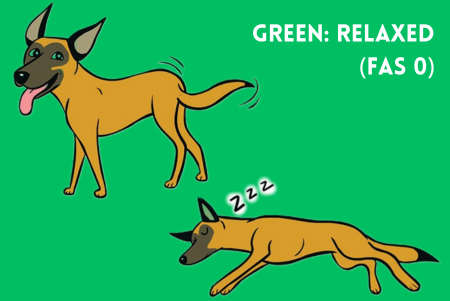

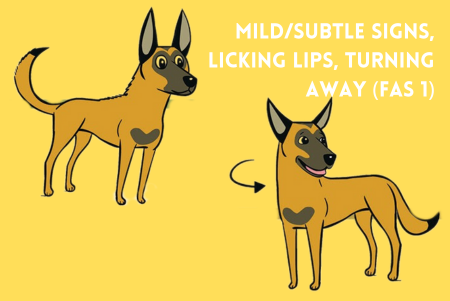
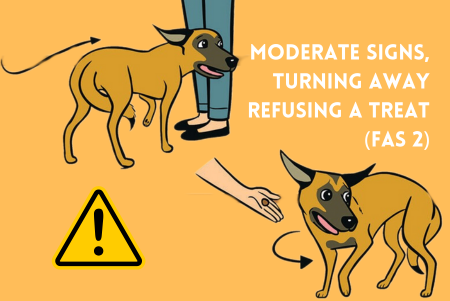
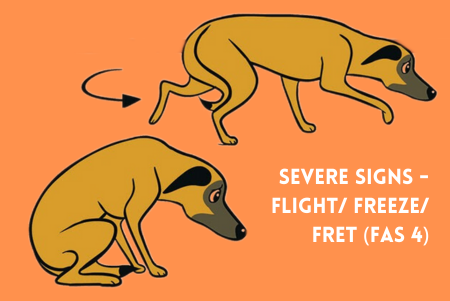
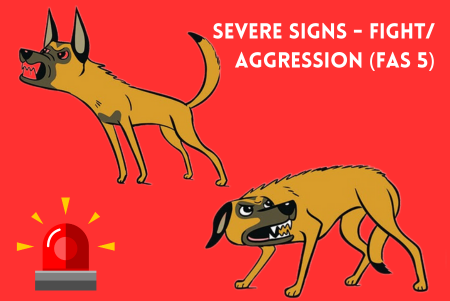
When to Seek Professional Behaviour Support
Sometimes, despite your best efforts, your dog’s behaviour may remain difficult to manage or even worsen. This can be frustrating and emotionally draining. Recognising when to seek help from a qualified behaviourist is an important step toward understanding and supporting your dog effectively.
Behaviour concerns that persist or escalate over time such as aggression, persistent fearfulness, separation anxiety, or compulsive behaviours often indicate a deeper emotional or medical issue that requires professional evaluation. These behaviours are not signs of a “bad dog”, and they wont grow out of it (I promise) but signals that your dog is struggling and needs support.
A Clinical Animal Behaviourist is trained to assess behaviour from a scientific and empathetic perspective. I take a holistic approach, looking at your dog’s entire history, medical status, environment, routines, and interactions. The process typically begins with a comprehensive consultation often lasting 2 hours where I gather detailed information about your dog’s behaviour and context.
This assessment helps identify any underlying triggers or unmet needs. In collaboration with your vet, I also review your dog’s health to rule out medical issues that could be influencing behaviour. Based on this, I create a personalised behaviour modification plan that includes clear, step-by-step strategies tailored to your dog and your household.
Behaviour change takes time, compassion, and consistency. As your behaviourist, I’m here to support both you and your dog throughout the journey, adjusting the plan as your dog progresses. Professional support doesn’t just resolve behaviour it builds trust, restores confidence, and strengthens your bond.
A Lifelong Approach to Behavioural welfare
Behavioural health is not a one-time achievement it’s a continuous journey that evolves as your dog grows and changes. By understanding your dog’s needs and supporting them with empathy and structure, you can foster a lasting sense of safety, trust, and contentment.
The foundation of behavioural welfare lies in meeting your dog’s core needs: a predictable and enriching environment, appropriate physical and mental stimulation, healthy socialisation, and strong emotional security. Alongside these essentials, recognising and managing stress, reading body language, and using clear, compassionate communication are key components that help your dog thrive.
Just as physical health requires regular care and adaptation, so does behavioural health. Your dog’s needs may shift with age, health status, or changes in lifestyle. Regular check-ins observing how your dog is coping, engaging, and interacting can help catch small concerns before they become bigger issues.
If challenges arise, don’t hesitate to seek guidance. Behaviour is a form of communication, and reaching out to a qualified professional can provide clarity, support, and relief for both you and your dog. A behaviourist will not only help you address current issues but also strengthen the lifelong bond between you and your companion.
Ultimately, supporting your dog’s behavioural welfare is about more than preventing problems. It’s about creating a life full of trust, curiosity, play, and connection. With each walk, each shared moment, and each gentle interaction, you are shaping a happier, healthier future for your dog.
Thank you for taking the time to learn how to support your dog’s behavioural health. Your commitment makes a world of difference in their life. 🐾
Contact Me Directly



